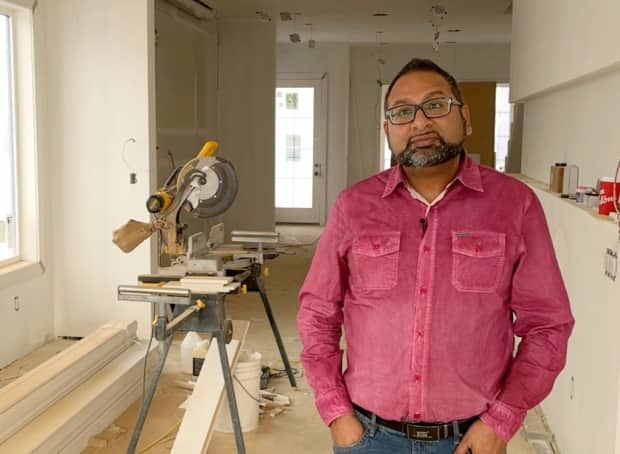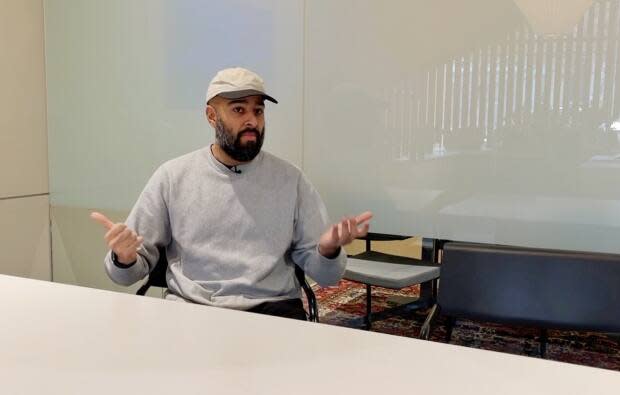Alberta needs an extra 20,000 homes to maintain affordability, but how do we get there?

For builders, developers and Calgarians looking for more affordable places to live, Jan. 17 could possibly be remembered as a milestone in the way the city plans and manages new growth in old neighbourhoods.
CivicWorks, an urban design and planning consultancy firm, presented the first-ever application under the city's new Housing Grade Oriented (H-GO) district, a new zoning tool that could provide more "missing middle housing" options.
The missing middle refers to a range of housing options that fall between single-family homes and apartment buildings. They include duplexes, town and row houses, stacked townhomes, courtyard townhouses and multiplexes.
The new infill buildings are meant to be compatible with existing single-family homes in mostly urban, walkable communities that are close to transit and other amenities.
The hearing lasted just 22 minutes.
Arlux Construction Ltd. was given the green light to knock down the existing, single-family home on 12th Avenue S.W. in Shaganappi to make way for the community's first courtyard-style, multi-unit infill.

The project will include two townhouse style buildings with a total of eight units. The community association spoke in favour of the project.
But while the hearing itself was short, it took 257 days to go from submitted application to approval. (Some of that delay was related to a change in the original application to the new H-GO district.)
The long approval process is just one of the hurdles builders face, long with labour and material shortages, rising interest rates and neighbourhood opposition.
Some projects also face pushback when nearby residents feel they're a poor fit — packing more people into decades-old communities — and changing everything from the views to traffic to parking.
And such tension — between developers, city hall and neighbourhood residents — isn't one likely to ease soon.
Alberta needs 20,000 more housing units above and beyond current rates of construction by 2030 to maintain affordability, according to the Canada Mortgage and Housing Corporation.
"Developers must become more productive and make full use of land holdings to build more housing while governments must make regulatory systems faster and more efficient," reads the report.
Hurdles to housing
Shameer Gaidhar is an inner-city builder and chair of the Calgary Inner City Builders Association.
Gaidhar says getting approval for some of his projects can stretch out to nearly two years.
"On a redevelopment, by the time you buy it, turn it around and someone moves into it, it's 22 months," said Gaidhar, inside a two-storey duplex he's building in the southwest community of Altadore.

He said he's had properties sit vacant for six months while he waits for a development permit.
Alkarim Devani is another inner-city builder who says there needs to be an ideological shift among residents, local politicians and city bureaucrats to allow more development.
Devani recalls a two-year approval process for an eight-unit development.

"There's this broken system," said the co-founder of development company RNDSQR.
"I could have unlocked 200 units on a multi-family development, and so why would anyone spend two years building eight units?"
He says existing neighbourhoods hold the key to unlocking a variety of housing options for families, multi-generational families and seniors.
"If we prioritize diversity, inclusion and accessibility within our communities, and we want to start charting a more sustainable path to development, well, this is one of the easiest ways to do it at a scale that is low density, that is contextually sensitive and that can make a massive impact on access to these communities.

"So, if I could choose one thing, it would be [municipal] leadership being forthright and charging forward and not batting down in the eye of conflict."
Approval timelines among the best
The city's general manager of planning and development services says Calgary ranked fifth among major cities for quickest building approval timelines.
Stuart Dalgleish refers to a study commissioned by the Canadian Homebuilders Association that found the timeline from submitted application to approval averages 5.4 months.
Overall, the city came in third place when its planning approval system and municipal charges to developers were factored in.

Dalgleish says he wants to hear from builders who face delays.
"If there is ever an application that you have in with us that you have any concerns about with respect to the process or the time that it's taking, please give us a call and let us know," he said.
Where to build and why
The pressure for housing is building. Last summer, nearly 60,000 people moved to the province, the highest quarterly bump in 40 years.
The city aspires to have a 50-50 split in where new homes are built. Half of them in brand new communities and the other half in existing neighbourhoods. Right now, the majority favours new communities in a 60-40 split, according to Dalgleish.

A professor of planning at the University of Calgary's School of Architecture, Planning and Landscape says the 50-50 split needs to be achieved for a number of reasons including affordability.
"We need to be able to revisit the places that we have and some of the neighbourhoods that we have built since the 50s and 60s and really come back and retrofit a lot of these places," said Sasha Tsenkova.
She said planners and builders need to capitalize on underused land and the abundance of services in existing neighbourhoods to intensify development. She said infrastructure is already in place, including roads, utilities, schools and other amenities.
Maybe, in my backyard?
The inner-city community of Inglewood faces continued pressure for bigger and taller developments.
RNDSQR proposed a 12-storey building at the corner of Ninth Avenue and 12th Street S.E. Devani confirms the project is on hold, in part because of rising interest rates and increased costs.

Nearly 30,000 people signed a petition against the project. The community association and the local business improvement area were also against it — saying it would be out of scale with the existing streetscape.
"There are a lot of uncomfortable discussions around it because we are fitting into an older neighbourhood with a lot of low-rise or even 100-year-old historic homes," said Bruce MacDonnell, the director of planning for the Inglewood Community Association.
"We get a lot of conflict around what should the right height be."
MacDonnell says the community is not opposed to new developments coming in, but it's the scale of some projects that it objects to.
On the horizon is a large development called Brewery Rail Lands that could see up to 1,750 residential units in six to 20-storey buildings.
H-GO is a start, but proponents say more is needed
While those larger projects potentially face more challenges in terms of approval, community opposition and financing, it's the smaller scale projects, such as the missing middle housing, that could potentially unlock more supply and potentially improve affordability for buyers and renters.
David White, a principal with CivicWorks, reflects back on his firm's involvement with the first H-GO district approval.
"The standardization of the bylaw is going to mean getting to the fundamental approvals in a more streamlined, efficient, understandable fashion."
"And I think you'll see more of these projects built without delay, possibly with fewer appeals, because they're easier to understand and predict. And that's going to be an absolute good thing for getting more missing middle housing and a lot of inner-city communities."
One hurdle to building housing that may be easier for developers to clear.
Bryan Labby is an enterprise reporter with CBC Calgary. If you have a good story idea or tip, you can reach him at bryan.labby@cbc.ca or on Twitter at @CBCBryan.

